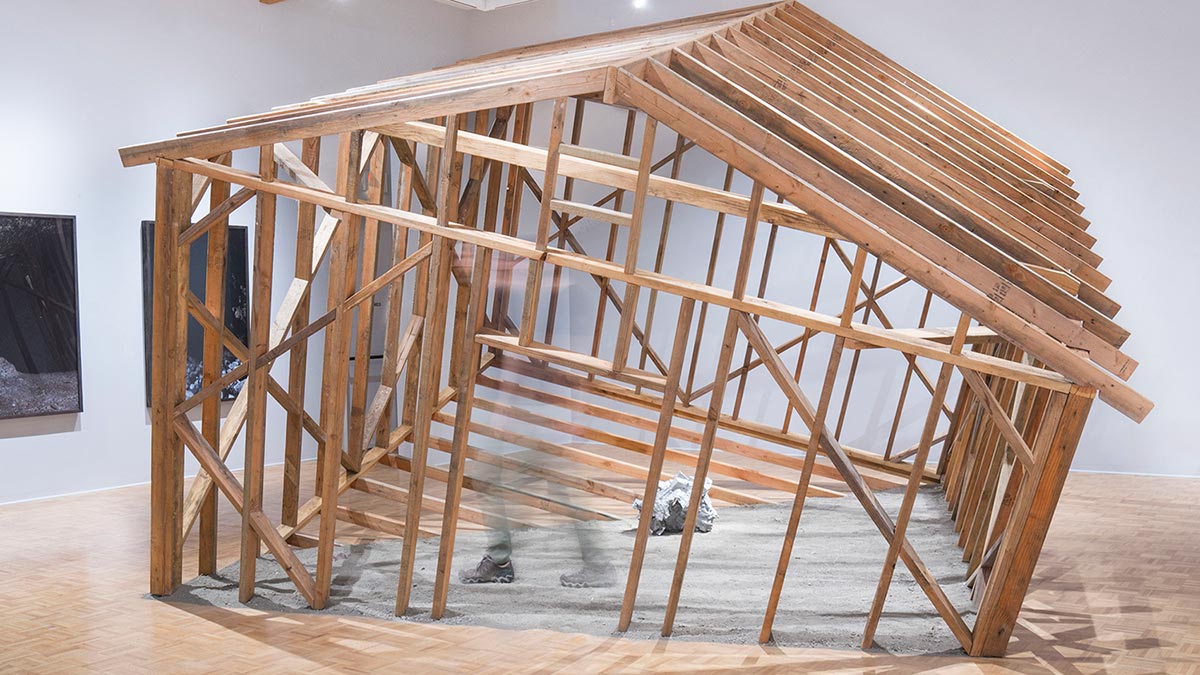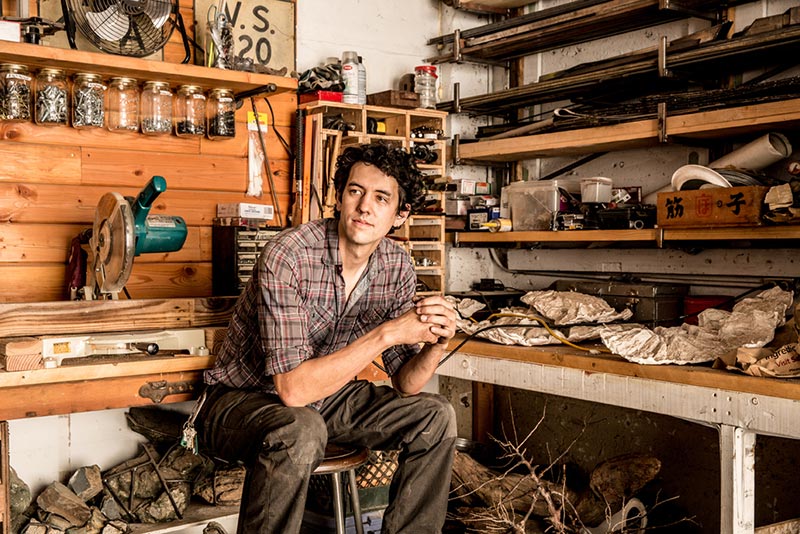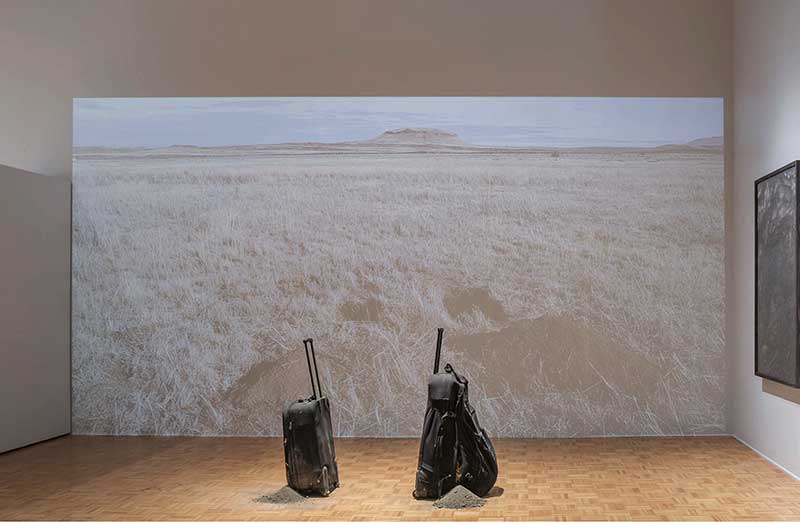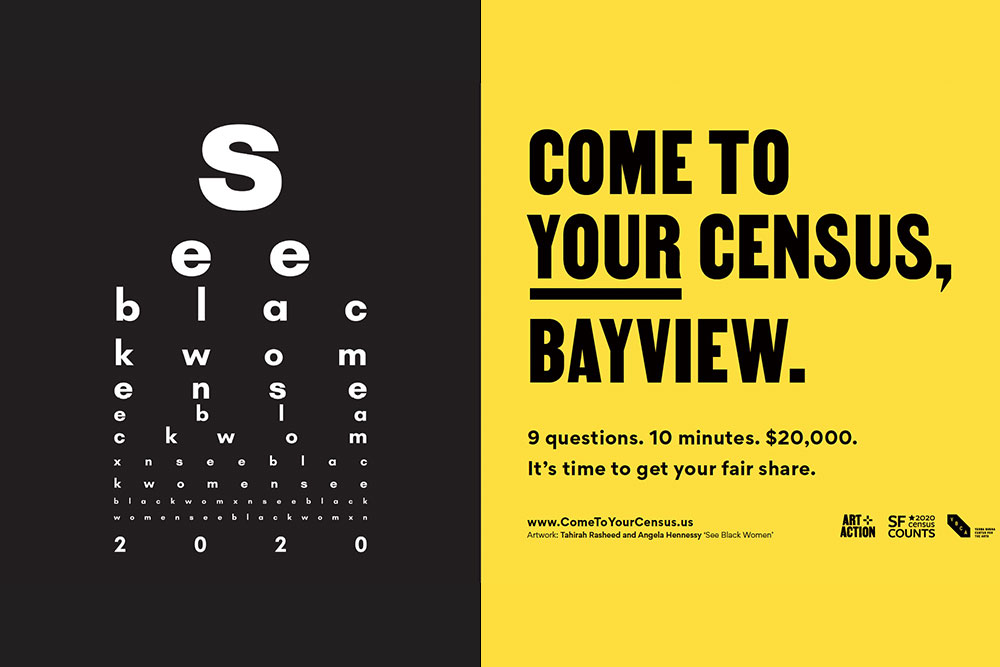Wed October 29th Open 11 AM–5 PM
9 Questions with Mark Baugh-Sasaki

As part of the digital experience Come to Your Census: Who Counts in America? presented under the umbrella of the Art+Action Coalition’s COME TO YOUR CENSUS campaign—powered by San Francisco’s Office of Civic Engagement & Immigrant Affairs (OCEIA)—YBCA and Art+Action have asked participating artists to respond to prompts around activism, community-building, and art, in the format of the Census’ 9 questions.
Mark Baugh-Sasaki is a San Francisco-based artist who combines industrial and natural materials to create fantastical objects and experiences. In recent projects, he examines his personal connections to Tulelake Segregation Center, where his father was incarcerated during World War II. Baugh-Sasaki’s work interrogates how we count communities in times of warfare, and how those histories live on within future generations.
What is your first experience in seeing/feeling the impact of art + activism?
When I was growing up, we’d go to the Mission District and I’d see all the different murals on the buildings. It was beautiful. I began to learn that these paintings were celebrations of the community, culture, heritage, and activism. They are ways in which the community was able to make visible the unseen. In a neighborhood that is often under-represented or overlooked due to immigration or socio-economic status, or the labor that is being performed by members of the community, these murals are an important way to declare pride in one’s identity.
What makes you feel a deep sense of belonging?
For me, it’s forming relationships with the people in my communities. As an artist it’s being able to feel the energy around me through my fellow creatives–the ability to have conversations about our ideas and the forms they will take. In my neighborhood, it’s about being able to get to know those around me and building friendships. As a Japanese American, it’s being able to participate in legacy organizations and traditions that have survived the disbanding of the Japanese American community during World War II.

What do you wish for your community?
I have many communities that overlap. Friends, family, creative, neighborhood, and cultural communities, to name a few. I wish that they be treated fairly and equitably, to be represented and heard, and to receive the support they need to grow and prosper.
Who are the most vulnerable members of your community and how do you support them?
I would say the most vulnerable members of my community are those in my neighborhood and creative communities. It is important that I hear what those around me want or need and to do my best with the skills I have to help facilitate.
As an educator as well as an artist, it is important for me to provide a platform and to highlight the diverse voices that surround us.
What’s at stake in contemporary art when creating work that pertains to social and political reform?
Being able to disrupt the status quo. It’s about using images, objects, and actions to subvert/challenge notions of normalcy and creating a situation where we engage with what otherwise might go unseen.
What are some strategies for breaking through political disengagement, distrust or distraction?
It’s important to form connections and relationships with communities and people that feel disenchanted with the political process. By listening to what they have to say and communicating often hopefully you can reconnect and bring them back to the conversation.
What would push you past your fear?
My fear in relationship to the Census, is that our government will continue to marginalize specific communities of people; for them to remain unseen. What is pushing me past that fear is my experience as a Sansei (3rd generation) Japanese American. The experiences of my family being incarcerated in relocation centers around the country and the disbanding of the Japanese American community as a whole after the war, has motivated me to do what I can to ensure the conditions that gave rise to the social acceptance of the incarceration of Japanese Americans don’t re-emerge in other communities.
What is at stake for you and your community by taking the census?
I live in the Bayview/Hunters Point neighborhood of San Francisco. It is a neighborhood that has been historically underrepresented, and at a time when the African American population of San Francisco is dwindling, is a unique and vibrant cultural community hub. It is important that our neighborhood is counted accurately so it can receive the representation and allocation of resources it needs to grow and thrive.
What, if anything, is worth fighting for?
To be seen, to be acknowledged, to be heard, to be considered, and to be respected.
Lead image: Mark Baugh-Sasaki, Between Memory and Landscape 1105-D, 2017. Wood, cast aluminum, and earth from Tulelake Segregation Center. Courtesy of the artist.



